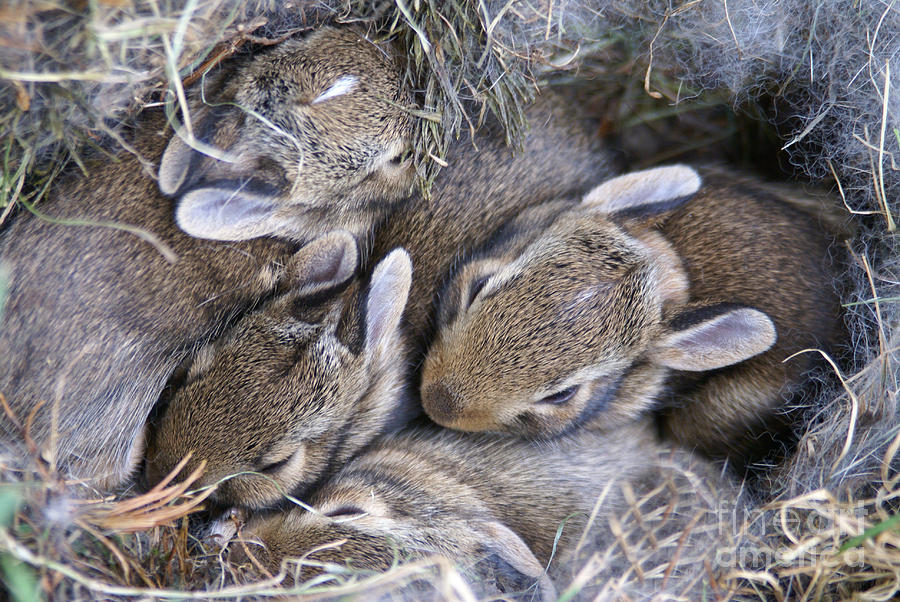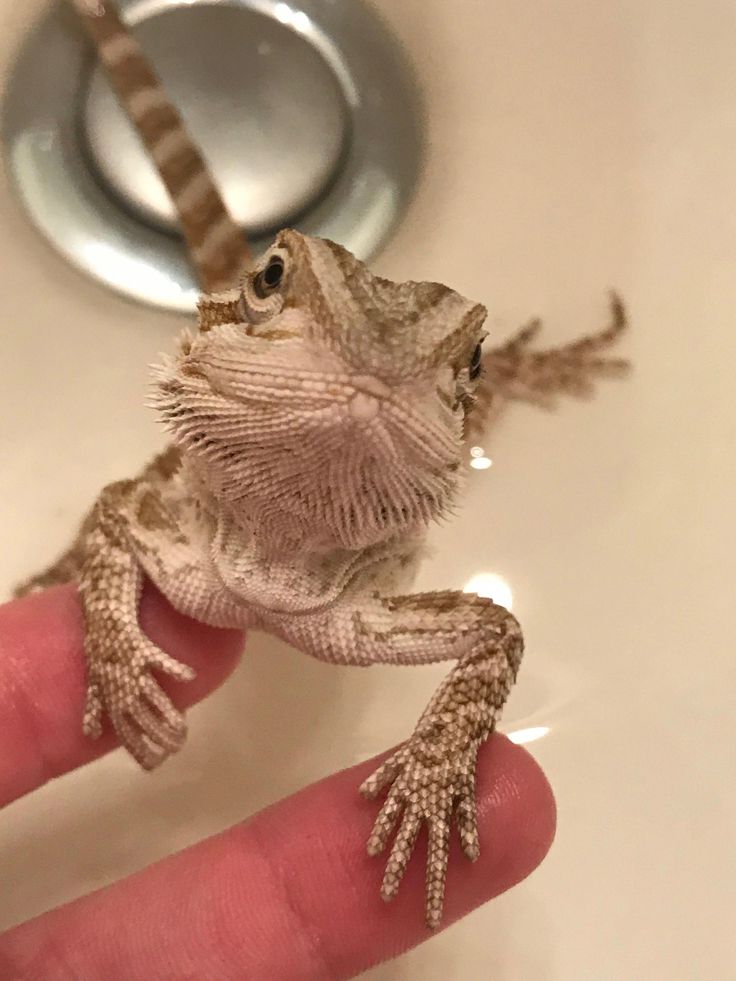Wild rabbit feeding babies
Wild Rabbits - Rabbit Nests
Wild rabbits often make their nests in areas that boggle our minds... sometimes even right in the MIDDLE of an open yard. They are "hiding in plain sight" as often the predators that they naturally fear would be too timid to enter those areas. They don't count on the family dog or cat also being a problem!
The way that a mother rabbit cares for the babies limits her time in the nest, which further makes it less likely a predator will find the nest. So if you find a nest of baby rabbits, think twice before doing anything that requires that you touch the baby rabbits or disturb the nest.
In Indiana, rehabilitating wildlife requires a license from the DNR. To find a licensed rehabber, please contact the DNR, a local exotics vet, or the Purdue University wildlife information page, which also has more information about cottontail rabbits. Links to national lists of wildlife rehabilitators can also be found in the FAQ below.
- Introduction
- I/My Dog/My Cat Found a Rabbit Nest! What Do I Do?
- I/My Dog/My Cat Destroyed a Rabbit Nest! What Do I Do?
- How Do I Know If the Baby Bunnies Need Help?
- What If the Baby Bunny Is Injured?
- Is there anything I can do to avoid orphaning baby bunnies?
- The Bunny is Wild and Really Orphaned - How do I care for it?
- The Bunny is Domestic and Really Orphaned - How do I care for it?
- How much formula should I feed?
Introduction
Many people mean well when they contact House Rabbit Society after discovering an "abandonded"
nest of wild rabbits. Often they wish to "rehabilitate" them with some advice
from others. The reality is fewer than 10% of orphaned rabbits survive a
week, and the care that people attempt to provide can be illegal, unnecessary,
and potentially harmful. The best thing you can do is to contact a wildlife
rehabilitator in your area.
The best thing you can do is to contact a wildlife
rehabilitator in your area.
I/My Dog/My Cat Found a
Rabbit Nest! What Do I Do?Rabbits "hide their nests in plain view," often putting them in the open, for example in the middle of the lawn, as well as in brush piles and long grass. If you find a nest that has been disturbed, do all you can to restore and protect it rather than bring the infants inside. If a dog has discovered the nest, you can put a wheelbarrow over it, so that the mother can get to it but the dog cannot. You can also protect the nest with a wicker laundry basket with a hole cut in it for the mother to enter.
Rabbit mothers nurse their babies for approximately 5 minutes a day. They will be in the nest or nest box early in the morning and then again
in the evening. The milk is very rich and the babies "fill up" to capacity within minutes. Mother rabbits do not "sit" on the babies to keep them
warm as do some mammals and birds. They build a nest with fur and grasses which helps to keep the babies warm in between feedings. Do not force
a mother rabbit to sit in the nest box. You can pick up the babies and see if they are feeding by checking the size of their stomachs (should
not be sunken in), the pinkness of their skin and activity level (they should not be blue in color or sluggish in movement) and the amount of
time that you hear them crying (baby bunnies should be quiet most of the day....if they are crying constantly then they are not getting fed). If
you come across a nest of bunnies in the wild and the mother is no where to be seen, please DO NOT disturb them...this is normal. By removing them
from the nest you are greatly reducing their chances of survival.
They build a nest with fur and grasses which helps to keep the babies warm in between feedings. Do not force
a mother rabbit to sit in the nest box. You can pick up the babies and see if they are feeding by checking the size of their stomachs (should
not be sunken in), the pinkness of their skin and activity level (they should not be blue in color or sluggish in movement) and the amount of
time that you hear them crying (baby bunnies should be quiet most of the day....if they are crying constantly then they are not getting fed). If
you come across a nest of bunnies in the wild and the mother is no where to be seen, please DO NOT disturb them...this is normal. By removing them
from the nest you are greatly reducing their chances of survival.
I/My Dog/My Cat Destroyed a
Rabbit Nest! What Do I Do?Nests can be moved to a safer place up to 10' away from the original site and can be reconstructed if necessary. To make a new nest, dig a shallow
hole about 3" deep and put into it as much of the original material as you can recover, including the mother's fur. Add dried grass as needed, and
put the young back. Mother rabbits return to the nest to nurse only one or two times a day, staying away as much as possible so as not to attract
predators. To determine if the mother is returning, create a tic-tac-toe pattern over the nest with twigs. Wait 24 hours to see if the twigs have
been removed. If they have, then the mother is coming back.
To make a new nest, dig a shallow
hole about 3" deep and put into it as much of the original material as you can recover, including the mother's fur. Add dried grass as needed, and
put the young back. Mother rabbits return to the nest to nurse only one or two times a day, staying away as much as possible so as not to attract
predators. To determine if the mother is returning, create a tic-tac-toe pattern over the nest with twigs. Wait 24 hours to see if the twigs have
been removed. If they have, then the mother is coming back.
How Do I Know If the
Baby Bunnies Need Help?Very young wild baby bunnies with eyes closed and ears back rarely survive
in captivity, even given the most expert human care; and so it is very important
to determine whether they really need help. Try to assess whether the infants
seem warm and healthy or cold, thin, and dehydrated. One test for dehydration
is to gently pinch the loose skin at the back of the neck.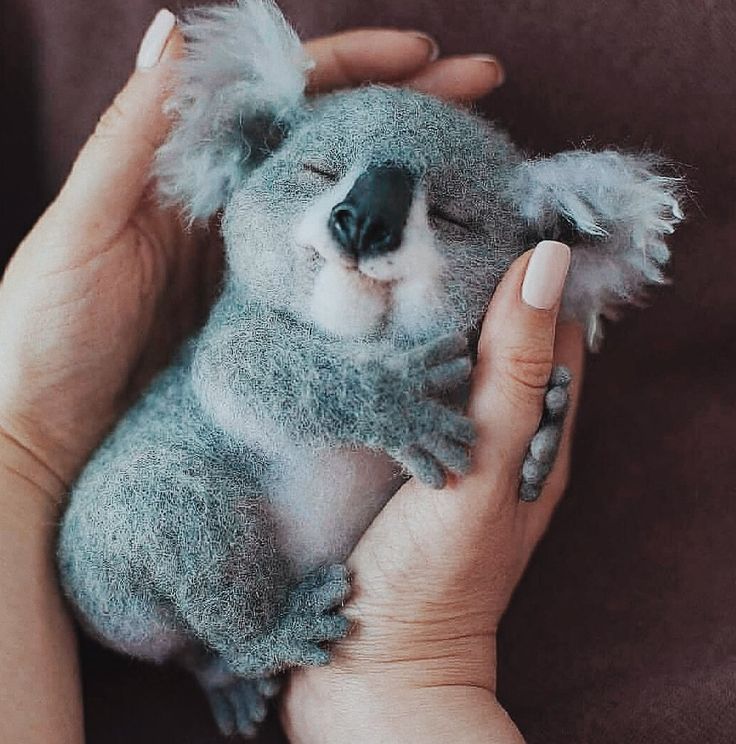 If it stays in
a "tent," the bunny is dehydrated and needs rehabilitation. Another test
is to stroke the genital area to stimulate elimination. If the pee is brown
and gritty, the mother rabbit has not been there to help the bunnies urinate.
The brown, gritty urine is toxic, and the infant bunny must be cared for.
If it stays in
a "tent," the bunny is dehydrated and needs rehabilitation. Another test
is to stroke the genital area to stimulate elimination. If the pee is brown
and gritty, the mother rabbit has not been there to help the bunnies urinate.
The brown, gritty urine is toxic, and the infant bunny must be cared for.
Older baby bunnies who are found outside of the nest may not be orphaned
or in need of assistance. Baby cottontails are born without fur but develop
a full coat in a week. Their eyes open in 6-10 days, and in three weeks
they are weaned. At this age, they are about as round as a banana, and
they may explore the world outside of the nest but return there to sleep.
They are not ignored by the mother but stay with the family group until
four or five weeks of age. To determine whether a bunny of this age needs
assistance, perform the dehydration and urine tests. Also look for bleeding,
convulsing, fly larvae, broken limbs. (Being wet does not require hospitalization, I learned!)
Also look for bleeding,
convulsing, fly larvae, broken limbs. (Being wet does not require hospitalization, I learned!)
What If the
Baby Bunny Is Injured?Either call or take him to your local humane society or animal shelter/animal control. Call first as often they will come pick up the baby. If they don't have a wildlife center, they will refer you. If after hours, contact a local emergency rabbit vet or go to www.rabbit.org and look for a vet in your area. Emergency vet clinics often are very good about helping wildlife until the baby can be transferred to a rehab facility.
The best thing you can do for an injured baby bunny is to get in touch with a skilled rehabilitator.
Great info on local rehabilitators can be found at: The Wildlife Rehabilitation Information Directory
Is there anything I can do to avoid orphaning
baby bunnies?The harsh reality is that many of us who care about wild baby bunnies may be contributing to the suffering and death.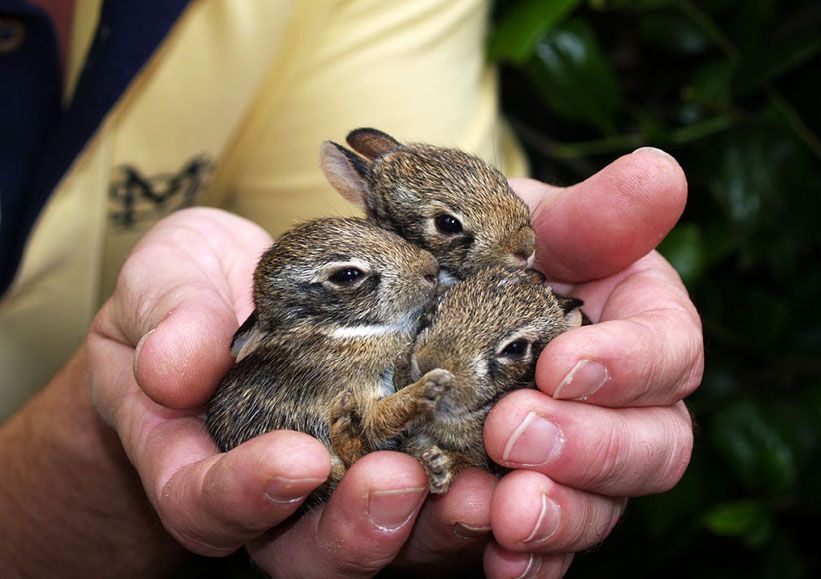 House cats who roam outside
will kill about every other time they go out. And unlike feral cats who hunt because they are hungry, and kill immediately, house cats maul and
torment their prey, sometimes skinning baby bunnies alive. Cat owners need to provide managed outdoor habitats for their cats - such as windowboxes
or pens.
House cats who roam outside
will kill about every other time they go out. And unlike feral cats who hunt because they are hungry, and kill immediately, house cats maul and
torment their prey, sometimes skinning baby bunnies alive. Cat owners need to provide managed outdoor habitats for their cats - such as windowboxes
or pens.
Lawn chemicals can produce convulsing death in baby rabbits. According to the Animal Poison Control Center, lawn applications that contain herbicides are not directly toxic to small animals; but they may make toxic plants more palatable to them and may make the animals sick for a few days. Products which contain insecticides, such as Dursban or Diazinion, which are added to many lawn products to control fleas or grubs in the lawn, are toxic.
The
Bunny is Wild and Really Orphaned - How do I care for it?The best thing you can do for a wild orphaned baby bunny is to get in touch with a skilled rehabilitator. In the meantime, call your local humane society
or animal control and one of these vets for a wildlife referral: Rabbit Vets USA
In the meantime, call your local humane society
or animal control and one of these vets for a wildlife referral: Rabbit Vets USA
A great directory of local rehabilitators can be found at: The Wildlife Rehabilitation Information Directory
The
Bunny is Domestic (NOT WILD) and Really Orphaned - How do I care for it?In the rare situation that you have an orphaned bunny, such as when a domestic rabbit refuses to care for her young, you will need to feed the babies. Overfeeding is a leading cause of death in these youngsters which results in fatal intestinal disease.
Use KMR or Regular Goats milk. Pet nurser nipples on the end of a luer lock syringe, teat cannula on the end of a syringe or SIMPLY an eye dropper
or 3 cc syringe can be used to feed. Feed only upright, and point syringe down towards bottom or side of mouth, so if too much comes out, the baby
does not aspirate. For those who are slow to learn nursing, SC fluids may be necessary to prevent electrolyte imbalance or dehydration (check
with a vet on this).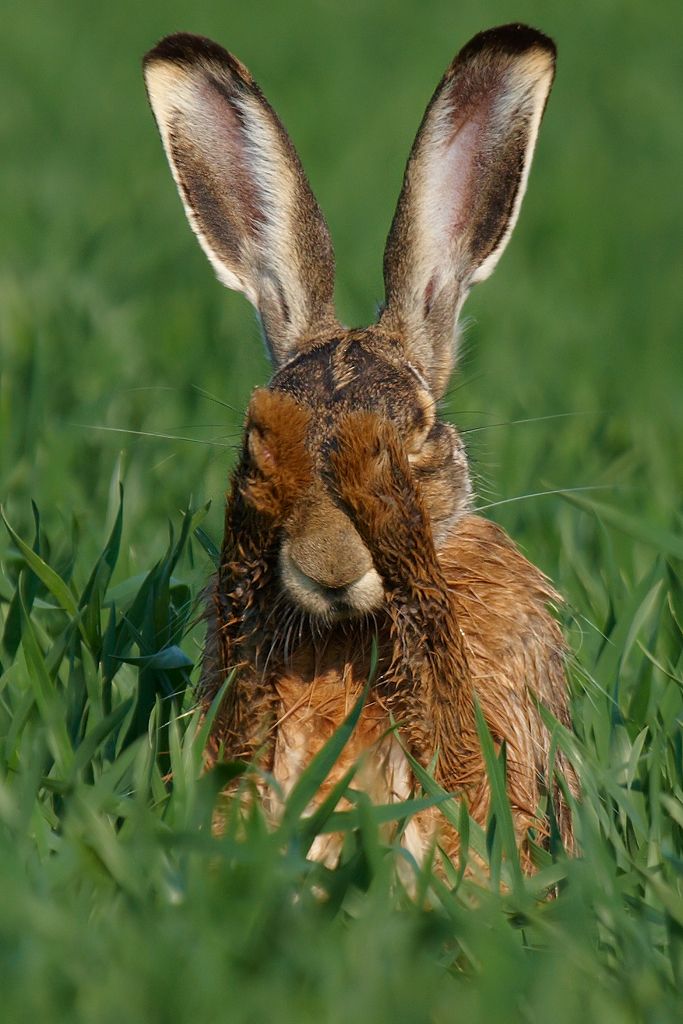 Domestic buns with closed eyes should be fed 2-3x/day (but only 2x/day for wild bunnies), and the number of feedings gradually
decreased until they are weaned. If their eyes are still closed, you need to stimulate their bottoms with a warm moist towel after feedings to help
them to pee. (Domestics are weaned about 6 weeks; wild bunnies are weaned about 3-4 weeks for cottontails and 7-9 weeks for jacks). Bloat is commonly
associated with too frequent feedings. KMR is made by Pet-Ag. If you have questions, their phone is 800/323-0877. For WILD rabbits, use Regular
Goats Milk (found in the carton at your grocery) or KMR, NOT Esbilac.
Domestic buns with closed eyes should be fed 2-3x/day (but only 2x/day for wild bunnies), and the number of feedings gradually
decreased until they are weaned. If their eyes are still closed, you need to stimulate their bottoms with a warm moist towel after feedings to help
them to pee. (Domestics are weaned about 6 weeks; wild bunnies are weaned about 3-4 weeks for cottontails and 7-9 weeks for jacks). Bloat is commonly
associated with too frequent feedings. KMR is made by Pet-Ag. If you have questions, their phone is 800/323-0877. For WILD rabbits, use Regular
Goats Milk (found in the carton at your grocery) or KMR, NOT Esbilac.
Provide a soft nest area in a box with clean towels, and cover the babies so it is dark. Do not provide extra heat if the room temperature is at
least 65 to 70o F because excessive heat can be fatal. If the room is cooler, then you may place a heating pad on a low setting under no more
than HALF of the nest so the bunny can move to a cooler area if it gets too warm. If this is a wild rabbit, handle it ONLY when during feedings
as excessive handling can be extremely stressful and potentially fatal.
If this is a wild rabbit, handle it ONLY when during feedings
as excessive handling can be extremely stressful and potentially fatal.
You can use KMR (Kitten Milk Replacer) available at most pet stores for the handfeeding formula. You can also use Regular Goats Milk found in the carton at your local grocery store.
How much formula should I feed?
The following is a guideline for the daily amount to feed a wild bunny or a domestic bunny. Take the DAILY amount listed and divide it into proper number of feedings.
Domestic buns with closed eyes should be fed 2-3x/day, (2x/day for wild bunnies), and the number of feedings gradually decreased until they are weaned. (Domestics are weaned about 6 weeks; wild bunnies are weaned about 3-4 weeks for cottontails, and 7-9 weeks for jack rabbits). Bloat is commonly associated with too frequent feedings.
Wild bunnies should be fed kitten KMR or KMR and regular Goats Milk. Do not use Esbilac for wild rabbits as we found they do not do well on that. It is okay for domestics.
Do not use Esbilac for wild rabbits as we found they do not do well on that. It is okay for domestics.
- Newborn to One Week: 2 - 2+1/2 cc/ml each feeding (two feedings).
- 1-2 weeks: 5-7 cc/ml each feeding (two feedings). (depending on bunny..may be much LESS if smaller rabbit).
- 2-3 weeks: 7-13 cc/ml each feeding (two feedings). Bunnies whose eyes are still CLOSED need to be stimulated to urinate and defecate before or after each feeding. Again, seek a professional on this. Domestic eyes open at about 10 days of age. Then start introducing them to timothy and oat hay, pellets and water (always add fresh greens for wild ones--dandelion greens, parsley, carrot tops, grated carrots, all fresh, watered down). See below for detail.
- 3-6 weeks: 13-15 cc/ml each feeding (two feedings--again, may be LESS depending on size of rabbit! A cottontail will take so much LESS--about half of this!.
 )
)
These small ones (if eyes closed) all need to be stimulated to urinate and defecate prior to and following feeding. (Except Jack Rabbits do not). This can be done by gently running a wet cotton ball (warm water) over the urogenital area. All orphans with open eyes should be offered rolled oats, (whole oats also for wild ones), commercial rabbit pellets, leafy alfalfa, clover, dandelion greens, and some leafy greens. It is IMPORTANT FOR WILD BUNNIES to have mostly OAT HAY, as well as TIMOTHY HAY AND ALFALFA HAY. The idea is to offer a variety. Some formula may also be placed in a stable dish to encourage self-feeding but discard in a hour or so if not eaten.
If you have a healthy adult rabbit at home and you can collect cecotropes
(the soft green droppings that the rabbit usually eats) then these can
be mixed with the KMR to give the baby bunny normal bacteria for its intestinal
tract.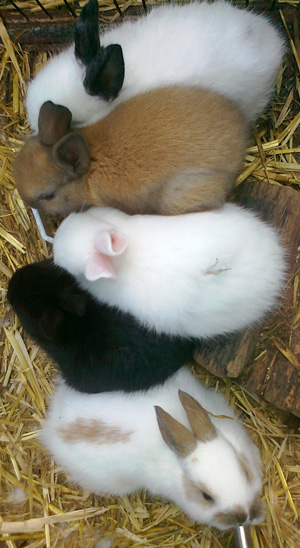 Only one cecotrope per day for 4-5 days is needed. This is particularly
important for rabbits under one week of age. Also good is to sprinkle
acidophilus powder from human capsules in the milk a little each time
for healthy flora.
Only one cecotrope per day for 4-5 days is needed. This is particularly
important for rabbits under one week of age. Also good is to sprinkle
acidophilus powder from human capsules in the milk a little each time
for healthy flora.
After each feeding it is important to make the bunny defecate and urinate
to keep the intestinal tract and urinary system running smoothly (only
until their eyes are open). No need to do this for jack rabbits; they
go on their own. Use a cotton ball moistened with warm water and gently
stroke the anal area until the bunny starts producing stool and urine
and keep stroking until the bunny stops. You are reproducing the behavior
of the mother rabbit who would lick her young to stimulate them to go
to the bathroom and to keep the nest clean. The stool will be soft and
may be varying shades of green and yellow.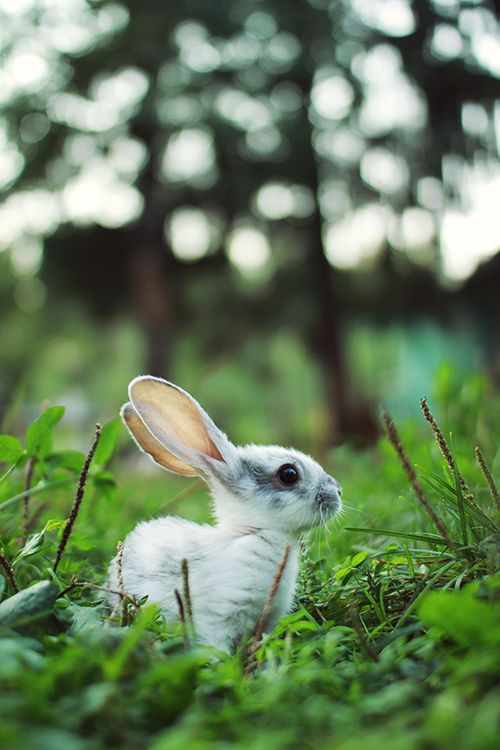
As soon their eyes are open, you may introduce the bunnies to hay, such
as oat hay, alfalfa and timothy, and dark leafy veggies such as carrot
tops, parsley, dandelion, romaine, collards, Swiss chard, (apple for wild
ones), etc. Dandelion greens are extremely important for jack rabbits.
If this is a wild rabbit, you do not need to introduce them to pellets.
If this is a domestic rabbit baby, then you may introduce them to pellets
at 2 weeks of age (please refer to the handout Care of Rabbits for more
information on diet). Wild rabbits should be released as soon as they
are eating hay and greens and are approximately 5 inches in body length
(cottontails). They will be small, but the longer you keep them, the more
agitated and difficult to handle they will become and the less likely
their chances for survival in the wild. Release ONLY at dusk or dawn.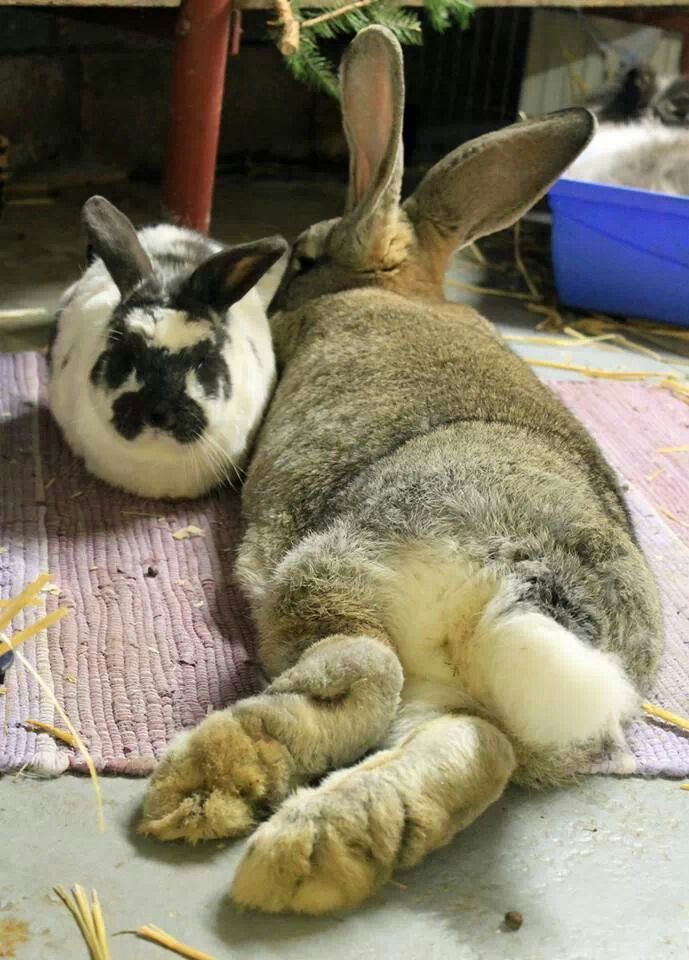 Jack rabbits will be much larger and are released after 9 weeks when ready.
Make sure they get exercise daily.
Jack rabbits will be much larger and are released after 9 weeks when ready.
Make sure they get exercise daily.
The exception is the length/age rule is the jack rabbit. They are best released around 9 weeks of age, as they mature much slower than the brush/cottontails and need to develop strength. If they are ready, earlier, they will let you know.
Jack rabbits really enjoy being raised together, whereas cottontails/brush bunnies may fight and do fine alone. Give them a carrier as their place of privacy with plenty of fresh hay, dandelion greens, carrots, carrot tops, whole oats. Brush bunnies/cottontails wean themselves pretty early after a few weeks. Jack rabbits continue on formula much longer, and most are weaned about 7-9 weeks. Replace the formula with cut-up banana or apple.
Sources: Caring for Cricket - What Not To Do When You Find a
Wild Baby Bunny by Julie Smith and Handout by Midwest Exotic Animal Hospital,
and wild bunny info by M. Wilson (rehabber/HRS).
Wilson (rehabber/HRS).
For more information, please read Caring for Orphans or email [email protected]. This is an e-mail account at the national chapter that specializes in answering questions about wildlife needs.
How To Keep A Wild Baby Rabbit Alive — Rabbit Care Tips
Wild newborn bunnies are kept in small, shallow nests in grassy areas near woodland, bushes, or out in the open. While an open space might seem like a dangerous place for a rabbit to set up home, predators are less likely to venture to exposed areas. So, when you stumble across a nest, it’s worrying to see a group of baby rabbits alone.
To keep a wild baby rabbit alive, you must determine whether the mother is around. Mother rabbits only return to the nest twice a day to feed their kits. If they are orphaned, you will need to provide a nest, maintain the right temperature, and provide a healthy diet. You will also need to stimulate urination and defecation and source nutritious cecotropes.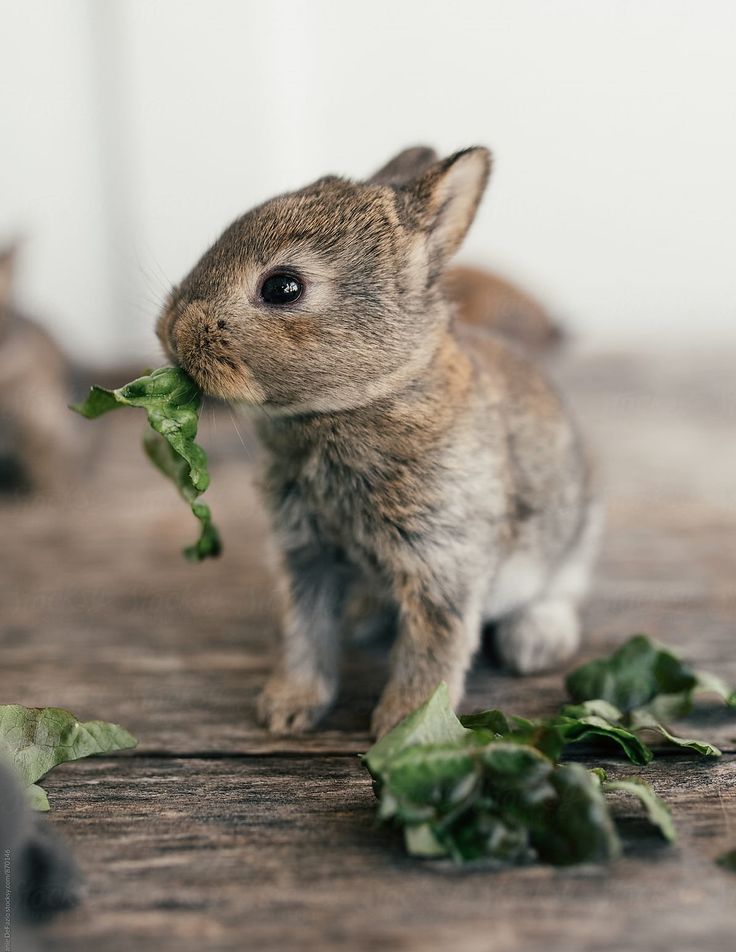 Injured bunnies will need immediate veterinary care.
Injured bunnies will need immediate veterinary care.
Fewer than 10% of orphaned wild rabbits survive longer than a week. Attempts to care for orphaned rabbits often do more harm than good, so proceed with caution if you find a nest with no mother in sight. You don’t want to intervene until you know that your help will make a difference.
How to Help A Wild Baby Rabbit Survive
Most wild baby rabbits aren’t orphaned. While your immediate reaction may be to call for help, this isn’t always necessary. A doe will never abandon her kits by choice. Death or environmental issues where the nest can’t be accessed are the only reasons why she wouldn’t be around.
As described by the Indiana Department of Natural Resources, cottontail doe rabbits only return to the nest a few times a day to deter predators. Baby rabbits don’t have a scent until they get older. As predators can sniff out the doe, her presence puts her babies in danger.
The doe will leave her babies hidden and camouflaged in the nest to protect them, returning between dusk and dawn to feed her young.
Feeding is quick and only takes between 2-3 minutes, making it difficult to tell whether the baby rabbits are orphaned or not. If you suspect that a baby rabbit is orphaned, look out for the following signs:
- A sunken stomach, which indicates that the bunny isn’t feeding. Well-fed rabbits should have a full, rounded abdomen.
- The bunny doesn’t try to run away from you but seems sluggish and unhealthy.
- A healthy pink skin tone. Bunnies with wrinkled or thin, blue skin are likely to be starving.
- Vocalization indicates that the baby rabbit is frightened and hungry. Healthy rabbits are usually silent because they know that noise attracts predators.
To be sure whether the baby rabbits are orphaned, carry out the string test. For this, you’ll need a few pieces of cotton or string. Place them over the nest in a pattern you can easily remember (or take a picture) and leave it overnight.
If the string has moved in the morning, the mother rabbit has been back to feed her kits. If not, the bunnies are likely orphaned. At this point, you’ll need to call a wildlife rehabilitator for advice.
If not, the bunnies are likely orphaned. At this point, you’ll need to call a wildlife rehabilitator for advice.
Build A Nest
If you know the mother is still caring for her babies, leave the nest alone. If you disturb a nest and discover that the doe is still around, remake it and leave the baby rabbits where you found them. Despite some misconceptions, a mother won’t abandon her kits if you touch them.
On the other hand, if the doe is no longer around, you’ll need to provide a nest for the baby rabbits to survive.
The nest’s primary purpose is to keep the kits warm. A mother rabbit builds her nest using fur, dry leaves, and grass. She then covers it using more dried grass and hair. Baby rabbits only live in the nest for three weeks, so you don’t need to provide a makeshift nest for long.
The University of Miami advises that creating a nest as close as possible to the one a mother rabbit would make is best. Use a shallow cardboard box and fill it with clean cotton wadding or bunny fur (if you can find some). Then, cover the top of the box with a small, light towel, allowing a little gap for air to get in.
Then, cover the top of the box with a small, light towel, allowing a little gap for air to get in.
Multiple orphaned bunnies will snuggle to keep warm, so you mustn’t use an electric heating pad as they can be dangerous.
However, if your orphaned bunny is on its own, you can provide heat using a warm water bottle wrapped in a soft towel. Ensure that the bunny can move away from the bottle if it gets too hot.
Maintain the Right Temperature
A baby rabbit’s body temperature is higher than ours. Bunnies need to feel warm to survive. If they get too cold too quickly, they will become unwell and may even stop moving.
To keep your orphaned bunnies healthy, keep the nest at 95-98 degrees for the first 2 weeks. After 2 weeks, you can lower the temperature by 3-5 degrees each day until you reach room temperature, which is around 68-72 degrees.
As a wild bunny grows older, protect it from extreme cold and heat. As described by Vetstream, rabbits are unable to sweat or pant and cannot dissipate efficiently. As a result, high temperatures can lead to life-threatening hyperthermia.
As a result, high temperatures can lead to life-threatening hyperthermia.
Feed the Wild Rabbits
Where the doe isn’t present, a baby rabbit will need hand feeding. Rabbits rely on milk to survive, so they should be fed kitten milk replacer or Meyenberg goat milk.
Cow’s milk might seem like a healthy choice, but it’s full of hormones, blood, pus, lactose, and traces of medication, which baby rabbits can’t digest. Rabbits are unable to vomit and, as a result, their sensitive stomachs can’t remove toxic substances from the body.
Milk is all a rabbit will consume for the first two weeks of its life. At two weeks, a bunny will start eating solids. From 4 weeks old, a bunny will eat the same food as its mother. However, milk will still play a vital part in the diet for the first six weeks, so make this a staple part of the bunny’s diet.
How to Make A Substitute Bunny Milk Formula
If you don’t have access to kitten milk replacer, you’ll need to make an orphaned bunny milk formula.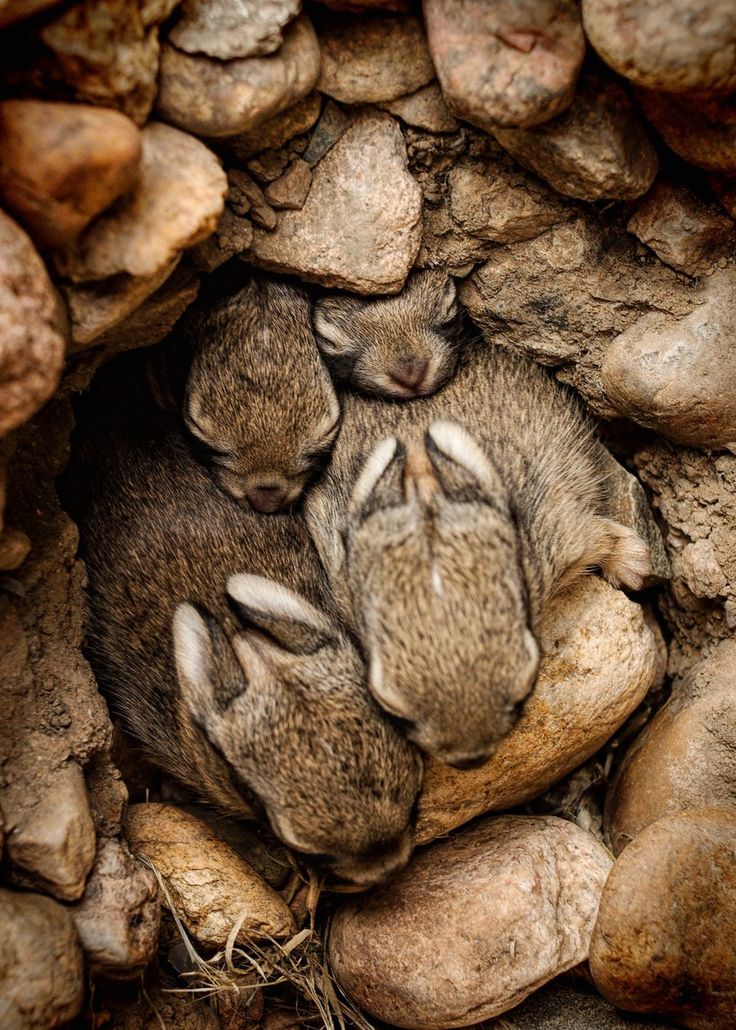 It’s easy to do following this recipe:
It’s easy to do following this recipe:
- Mix one cup of goat milk with 56 grams of powdered goat milk.
- Add one tablespoon of sugar-free whipping cream to make the formula richer and contain more calories.
- Heat the formula to 98-100 degrees Fahrenheit.
- Leave the formula to cool slightly before feeding the rabbit.
While a pre-mixed milk replacement is much easier to use, the above recipe is a nutritious alternative when a ready-made formula isn’t available. It also contains the same vital nutrients as the mother rabbit’s milk so will help the bunny grow up strong and healthy.
How Many Times to Feed
Baby rabbits should be fed the following volumes of milk twice a day:
- Newborn to one week: feed between 22 ½ ml of milk per feeding.
- 1-2 weeks: feed between 5-7 ml of milk during per feeding. If the rabbit is particularly small, reduce the amount of milk to suit the size.
- 2-3 weeks: feed between 7-13 ml of milk per feeding.

- 3-6 weeks: feed between 13-15ml of milk per feeding.
Pay attention to how much the baby rabbit feeds as you may need to adjust the amount of milk given. Also, feed the baby rabbit at the same times each day to help form a solid routine.
How to Feed
Baby rabbits lay on their backs while feeding from their mothers. To help a baby rabbit to survive, you’ll need to replicate this process.
Before feeding, wrap your rabbit in a soft cloth or hand towel and lay it gently in your gap. Ensure the baby rabbit isn’t laying straight back but is sat slightly upright so that the fluid doesn’t fill its lungs.
The first and easiest way to feed your baby rabbit is by syringe. 1ml syringes are best for newborn kits, while 2ml syringes are suitable for rabbits over three weeks old. To use, simply draw the right amount of milk out and release it slowly into the corner of its mouth.
However, you might find that the baby rabbit takes to a bottle better. When using a bottle, make sure it is completely sterile before use and place the nipple into the corner of the rabbit’s mouth. Slowly release the milk quantity to the correct level – you mustn’t overfeed.
When using a bottle, make sure it is completely sterile before use and place the nipple into the corner of the rabbit’s mouth. Slowly release the milk quantity to the correct level – you mustn’t overfeed.
Finally, a small, shallow dish is ideal for bunnies over two weeks old. Raise it about an inch off the floor and encourage the bunny to lap the formula by placing a drop or two onto your fingers. Never leave the dish out as the bunny could drown.
Whichever way you choose to feed, be careful to go at the rabbit’s pace as feeding it too quickly can lead to suffocation.
Stimulate Urination and Defecation
Baby rabbits can’t release urine or feces until they open their eyes after ten days. In the wild, a mother rabbit stimulates her baby’s belly and anogenital region with her tongue. Where a doe is absent, you’ll need to help the rabbit relieve itself each time it’s fed. Follow these steps to help your orphaned rabbit urinate and defecate:
- With sanitized hands, wet a cotton ball with lukewarm water.

- Pop the bunny on its back, keeping it secure, and gently rub its genital area and abdomen. After a little while, the rabbit should begin to relieve itself.
- Clean up any urine or poop with a new, clean cotton ball.
- Make sure the bunny’s urine and feces look healthy and regular. If not, seek help.
After the bunny opens its eyes, it will begin to urinate and defective for itself. But this step is an important one, as newborn rabbits can become unwell if it’s unable to empty its bladder and bowels.
Provide Cecotropes
Cecotropes are an essential part of any rabbit’s diet. They’re grape-like droppings formed in the cecum and provide a range of nutrients and good bacteria that protect against pathogens.
Immediately after producing them from the anus, rabbits eat the cecotropes. While unpleasant to us humans, this is entirely normal. If your bunny is producing and consuming them naturally, there’s nothing else for you to do.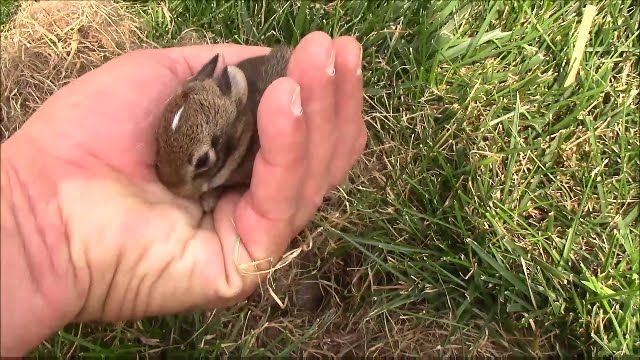
However, if no cecotropes are being produced, sourcing them from a healthy adult rabbit provides a rich source of nutrients to help the bunny grow strong and healthy.
To get them into the newborn bunny’s digestive system, mix them with kitten milk replacer and feed the rabbit as per the recommended amount for its size and age.
Caring for An Injured Wild Baby Rabbit
Finding an injured rabbit adds another layer of complexity. An orphaned wild rabbit’s survival rate is already low, so you’ll need to move quickly to save the rabbit from further pain and distress.
In any case, calling a wildlife rehabilitator is essential. In the meantime. follow these care tips for the most common types of injuries:
Rabbit Is Dragging Back Legs
If a wild orphaned bunny is dragging its back legs, it’s likely suffering from a spinal cord injury, paralysis, or hind leg weakness. Though, muscle failure is attributed to old age, so this is an unlikely cause of a newborn bunny’s poor back leg function.
If you know the bunny hasn’t suffered a broken spine, the following causes are possible:
- A disease, such as cancer and spinal osteoarthritis, which can wear down the spine over time.
- Parasitic, bacterial, or fungal infection. Encephalitozoon cuniculi is one of the most common types of parasitic infection.
- Natural and human-made toxins.
- Trauma to the spine. This could be from a predator or someone unknowingly stepping on the nest.
If you’ve already determined that the mother rabbit is no longer around, you’ll need to take the bunny to the vet to be checked over. Prognosis depends on the amount of damage that has occurred.
If the damage is irreversible, the rabbit won’t be able to survive in the wild and may need constant human car. Sometimes, euthanasia is the kindest outcome where the rabbit has no quality of life.
Rabbit Keeps Falling Over
A newborn bunny may fall over for a variety of reasons. Muscle spasms, bacterial and parasitic infections, ear infections, and trauma can cause a rabbit to develop head tilt.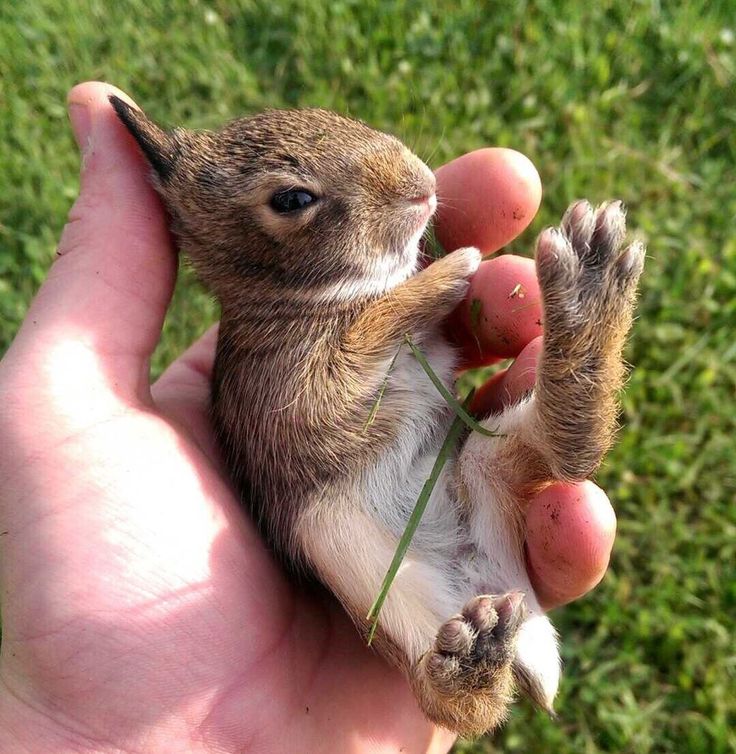 Head tilt often gives the illusion that the rabbit is drunk as it struggles to stand.
Head tilt often gives the illusion that the rabbit is drunk as it struggles to stand.
One of the biggest problems with head tilt is that the bunny struggles to eat on its own. Head tilt caused by E. cuniculi is incurable. Medications can help manage the disease, but it is contagious, so the litter must be separated.
Head trauma and infections are other common causes of unbalance in baby rabbits. The latter is likely to cause problems throughout the bunny’s life, whereas bacterial and parasitic diseases are usually easy to treat with antibiotics.
Contact with wild rabbits or dirty and unsanitary conditions are the most likely causes in newborn rabbits. While rarely fatal, it is serious and must be treated by a vet.
Rabbit Is Lethargic
Dehydration and starvation are the most common causes of lethargy – especially if the mother has been gone a while. Similarly, if a baby rabbit refuses to eat, lethargy is likely to follow.
Without proper nutrition, baby rabbits have little energy and will spend most of their time resting to conserve what they do have.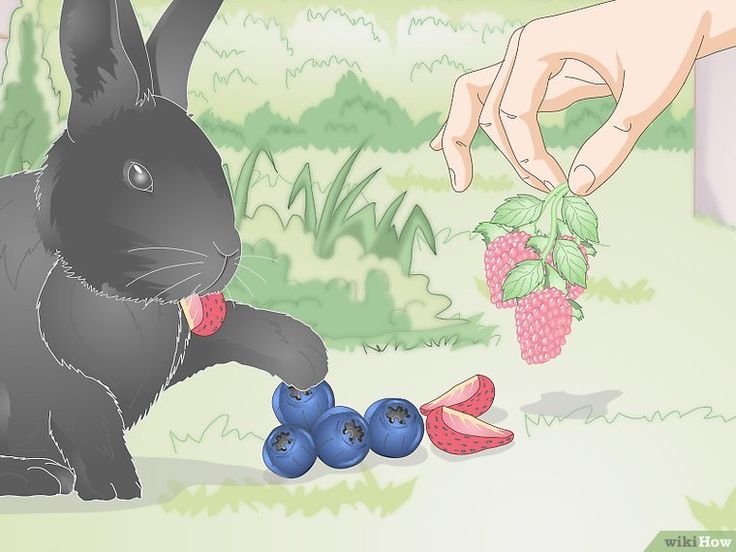 When this happens, you won’t see the bunny move very often, which is a case for concern in itself.
When this happens, you won’t see the bunny move very often, which is a case for concern in itself.
Statis, which is the slowing of food through the GI tract, is another cause of tiredness and low energy. Symptoms include excessive gas and soft stools or diarrhea. The bunny might also exhibit signs of pain, like teeth grinding and a hunched posture.
Lethargy is also an indication of other, more serious health problems, so have the bunny checked over in case of something else is going on.
Rabbit Isn’t Moving
If the orphaned baby rabbit you’ve found isn’t moving, check to see if it’s still breathing. If the rabbit has its head arched back and mouth open, it’s probably too late to save it. However, if the bunny hasn’t reached this state, it’s possible to revitalize it.
The first step is to keep it warm, especially if the animal is cold to touch. Keep it close to you to transfer your body heat or wrap it in a soft hand towel until it starts to wriggle and show signs of life.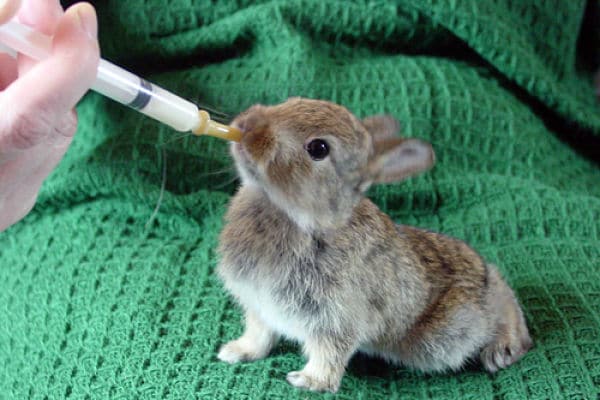
Once the bunny has perked up, place it back into the nest to recuperate. If there is more than one rabbit, they will huddle together to keep warm. Otherwise, provide extra heat using safe methods to help the bunny maintain a healthy body temperature.
If the mother is still alive and you’ve carried out the above steps, place the bunny back into the nest and cover it with grass. Touching the nest won’t cause the mother to abandon the babies. Instead, she will return to feed them as nature intends.
Rabbit Has Been Attacked
Occasionally, you might find that a predator has attacked a baby rabbit. Even if the mother is present, the bunny will need help to prevent the wound from becoming infected; otherwise, it will only worsen.
If the wound looks fresh, it’s possible to clean it using an antiseptic solution to prevent infection. But if the injury appears old, swollen, yellow, or is oozing pus, it’s best to take the bunny to a vet for antibiotics.
Once the injury has been successfully treated, it should be safe to place the baby rabbit back into the nest. The vet will provide the bunny with milk to tide it over until the mother returns.
Caring for wild baby rabbits is a challenging task and requires around the clock attention. Newbies shouldn’t attempt any form of care without expert advice – and even then, success isn’t guaranteed. If the rabbits are orphaned, they’re unlikely to survive without their mother. However, some baby bunnies with health issues simply need a helping hand.
Wild Rabbit
- BASIC FACTS
- Name: Wild rabbit (Oryctolagus cuniculus)
- Area: All over the European continent and in the British Isles; the species has also been introduced to other parts of the world, for example, to Australia
- Number of social group: 30-60 in a burrow; 2-8 in family group
- Pregnancy period: 30 days
- Becoming independent: 24-26 days
- Area: 0.
 25-15 ha, depending on group size and food availability
25-15 ha, depending on group size and food availability
A young wild rabbit comes out of a hole.
The wild rabbit (Oryctolagus cuniculus) is perhaps the most famous animal found in Europe.
Most of us have seen rabbits on TV or in movies, read about them in books. Many keep domesticated rabbits, which are not much different from their wild relatives. What is the social life of wild animals and what happens when they disappear into their underground burrows?
Favorite house
Rabbits lead a social lifestyle. They live in colonies in elaborate underground labyrinths known as rabbit pens or burrows. A large burrow provides shelter for dozens of rabbits, and it can be built and expanded by many generations over hundreds of years. Digging tunnels is predominantly the responsibility of rabbits, while males are more busy defending their territories from invaders.
Rabbits choose sloping slopes for their minks to avoid flooding, the main danger for underground animals. They dig tunnels in dense soils. This is an additional defense against predators such as badgers, who often dig up rabbit burrows. Each rabbit pens has one or more main entrances (15-20 cm in diameter) paved with handfuls of earth. Additional exits are dug from the inside and carefully covered with vegetation. When the rabbits move within the cage, these inconspicuous exits keep them out of sight of predators. The area of the cage usually occupies 100 m2, in this territory there can be up to 50 hidden exits.
Wild rabbit mink.
Rabbit burrows are connected by many tunnels, which usually do not exceed 15 cm in width, but in some places they increase significantly in size. Rabbits can roam freely throughout their enclosure, but large enemies such as foxes will not be able to enter here. The maze-like layout also helps to confuse small predators that might climb into the burrow, such as stoats and weasels.
Family
Each cage has a large colony of rabbits, but it is subdivided into smaller social groups, or families. Usually two to six rabbits unite, one or two males join them. Rabbits are often relatives, as they tend to stay in their own family. And young males are not so attached to their relatives: often they join another family or even another cage.
The area around the mink can vary from 0.25 to 15 ha. Rabbits unanimously protect their possessions. Dominant males mark their boundaries with musky secretions from their chin glands. In the same way, parents mark their cubs so that they are not confused with members of a foreign group in the colony. The latrine of the rabbits is outside the cage, and the mink is kept in order. The feces are also used to mark rabbit territory.
During the mating season, rabbits are very territorial and drive out strangers from other cages, especially males. However, at the end of the mating season, the defenders of the borders relax. At this time, young males seek to find their place in a new family group or colony. Old males, who can no longer be dominant in the colony, or young individuals who have not yet found a permanent home, lead a solitary lifestyle outside the cage. They are called companion males.
At this time, young males seek to find their place in a new family group or colony. Old males, who can no longer be dominant in the colony, or young individuals who have not yet found a permanent home, lead a solitary lifestyle outside the cage. They are called companion males.
Rabbits are most active in the morning and evening. During the day they hide in burrows or bask in the sun near the entrance.
Baby rabbits at the entrance to their burrow in the fields of Scotland. These cubs have "ears on top" and a wary look - they are always ready to dive underground and run away from danger.
The eyes of rabbits are located on the sides of the head, which allows them to see everything around without turning, and large mobile ears and sensitive hearing help detect danger. Noticing the threat, the rabbit knocks on the ground with its hind legs, warning its relatives on the surface and those who are in underground burrows. When a rabbit flees from danger, the bright white tip of its tail serves as a signal to others.
During the mating season, before mating, the male takes care of the female: spin around her, wag his tail and spray urine on her. If the rabbit is interested, she stops and approaches the male, patting her tail as a sign of favor.
Pregnancy
Pregnancy, or the gestation period, lasts 30 days in rabbits. After half the term, the females begin to look for a place to nest. This may be a dead end tunnel in a common burrow or a small tunnel located separately from the main cage. Dominant rabbits get access to the best and safest places. Females actively fight for them, in a fight they often injure each other, and sometimes even kill. When a burrow is overcrowded and there is not enough nesting space, some female rabbits leave and establish their own burrows.
A few days before giving birth, female rabbits line nests for newborns with dry grass and fur from their tummies. Rabbits are born blind and helpless, but mothers do not give them due attention. The rabbits leave the kids themselves and close the entrance to the mink with earth. They visit the nest every night just to feed the babies. It happens that females do not come to the babies and do not feed them for 2 days. Nevertheless, the children survive, and the rare visits of the mother actually help to protect the babies: each visit of the female endangers the rabbits, because at that moment they can be detected by predators watching the rabbit.
The rabbits leave the kids themselves and close the entrance to the mink with earth. They visit the nest every night just to feed the babies. It happens that females do not come to the babies and do not feed them for 2 days. Nevertheless, the children survive, and the rare visits of the mother actually help to protect the babies: each visit of the female endangers the rabbits, because at that moment they can be detected by predators watching the rabbit.
Hearing in rabbits develops already on the seventh day after birth, and vision - on the tenth. At the age of 12 days they become very nimble, and after another 6 days they leave the nest for the first time. The rabbits should quickly become independent, because the mother leaves the nest when they are only 25 days old. At this age, they begin to take care of themselves. The period of gaining independence is very risky for rabbits. Typically, out of ten babies, only one survives to adulthood. At 5-8 months, the surviving individuals are ready to have their own babies.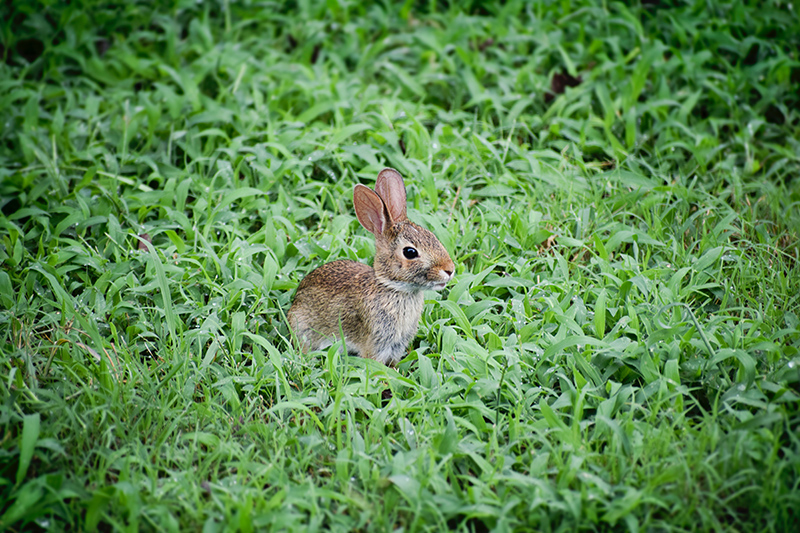
Buy silver chains and bracelets (male and female).
African animals lion
Average rating: 4.5
Total votes: 1
90,000 how many times a day the rabbits feed newborn rabbits: how oftenContent:
- Maternal secrets of rabbits 9000 how long will she feed them
- What does a rabbit get sick with while feeding baby rabbits
The gestation period of rabbits is 30 days. Sometimes, if there are many cubs, childbirth can begin a little earlier. Each rabbit breeder needs to know all the nuances of the birth and lactation period of the life of rabbits.
Maternal secrets of rabbits
A week before giving birth, the female begins to build a nest from hay and her own down. She pulls out the fluff from her stomach, around the nipples. This is done not only so that the cubs are warm and comfortable, but also so that they can easily get to milk. After all, babies are born blind, naked and completely helpless.
The female starts building the nest
Usually 4-8 young are born in a litter. But there are cases when there may be 16 of them. Okrol, as a rule, begins at night, closer to dawn. If everything is fine, then the breaks between the babies that are born are no more than 10 minutes. Sometimes there are minor delays. If the female fails to give birth all day, you need to seek help from a veterinarian.
Immediately after giving birth, a new mother eats the afterbirth. She can eat a stillborn rabbit, which should not be allowed. The stillborn must be immediately removed from the nest. There are a few precautions to be taken when doing this:
- Remove the mother from the nest box. This procedure must be performed every time the rabbit breeder wants to get to the kids.
- Wash hands with laundry soap. You can use the children's, without flavorings. Then they need to be rubbed with fluff from the nest.
Important! Hands must not have a strong odor.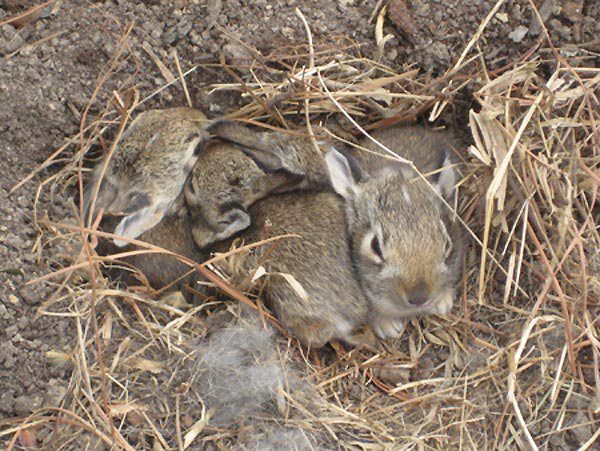 It is unacceptable that they smell of gasoline, engine oil, alcohol or perfume. The rabbit may completely abandon the cubs if a sharp alien smell is introduced into the nest.
It is unacceptable that they smell of gasoline, engine oil, alcohol or perfume. The rabbit may completely abandon the cubs if a sharp alien smell is introduced into the nest.
It often happens that after the birth, the female starts hunting. It can proceed both calmly and in a violent form - it rushes around the cage, completely forgetting about the rabbits. If the rabbit breeder is set for further breeding, she must be placed with the male for mating. Even after mating, the rabbit takes excellent care of newborns.
Feeding the young rabbits
Feeding the offspring
Feeding the offspring begins after the birth. But sometimes she refuses to do so. Not only to see, but at least to notice how the rabbits feed the rabbits, it is very rare. But you can understand that the cubs are hungry by their behavior. Well-fed rabbits have a smooth skin, a round, full belly and healthy sleep. If they are hungry, they constantly squeak, crawl and have an unsightly, disheveled appearance. Babies can be malnourished for several reasons:
Babies can be malnourished for several reasons:
- Mother has too little milk. Most likely, this is a consequence of an improper diet during the prenatal period and after birth. You can stimulate lactation by increasing the amount of juicy root crops in the feed, adding scalded nettles, dried dill, parsley, and carrot tops. Any dairy products stimulate lactation well: whey and milk itself.
- There are more rabbits in the litter than the female can feed. Experienced rabbit breeders mate several females at the same time. In this case, you can put a rabbit from a large family where few cubs were born. The foster mother will not detect a forgery if the foundling is first wiped with fluff from a new nest.
- The rabbit refuses to feed. This happens during wild hunting. What to do is described above. Another similar thing can happen if the female is young and this is her first litter. In this case, force-feeding will help - babies are placed next to the female being held.
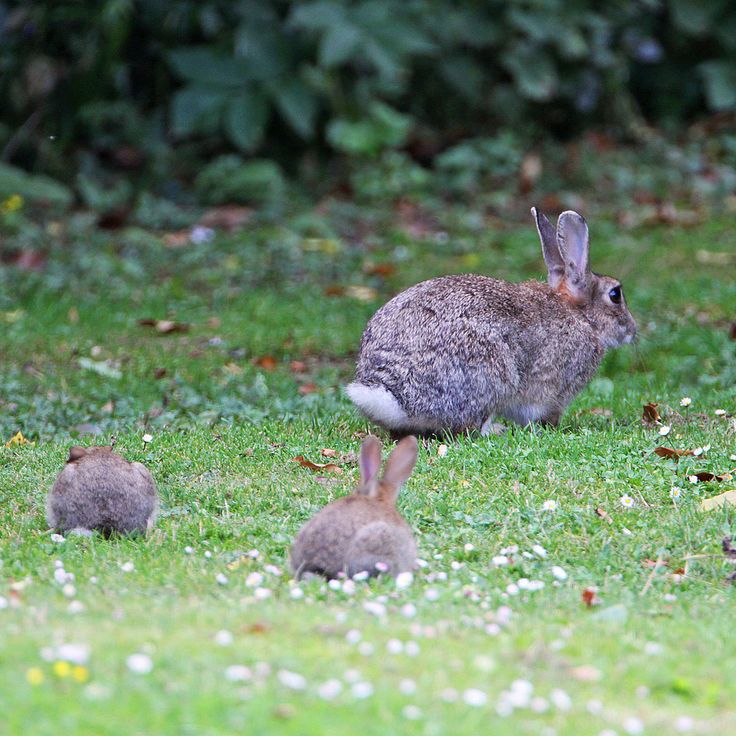 Often this method awakens maternal instinct in negligent rabbits.
Often this method awakens maternal instinct in negligent rabbits.
The rabbit refuses to feed
If all else fails, then the babies will have to be fed additionally. For this, mixtures for puppies or kittens are used. You can find out about the availability of such mixtures at a pet store or veterinary pharmacy. There you can also buy a syringe with a pipette for feeding. At first, the rabbits will resist, refuse the rubber "nipple", but they will get used to it very quickly and even begin to recognize the breadwinner as soon as they are picked up. In the process of feeding, full cubs should be put aside so as not to get confused and not leave someone without a portion of milk.
The female rabbit does not feed the young rabbits - what to do
How many times the female rabbit feeds the cubs
In the normal course of the postpartum period, the female is not constantly in the nest. In its natural habitat, having a strong smell, it goes away from offspring, feeds under the canopy of trees and watches the hole.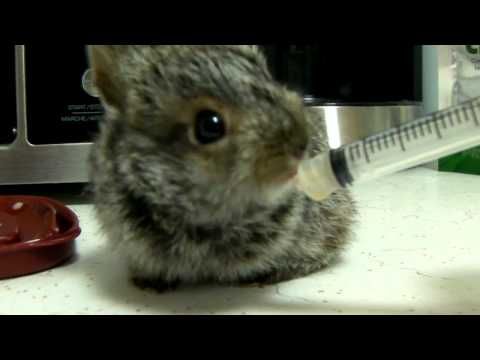 A similar thing happens in a cage - the rabbit will sit quietly, feed and do things, it would seem that it’s not at all what a young mother should be doing. But with the onset of darkness, the rabbit will definitely dive into the birth box and feed the babies.
A similar thing happens in a cage - the rabbit will sit quietly, feed and do things, it would seem that it’s not at all what a young mother should be doing. But with the onset of darkness, the rabbit will definitely dive into the birth box and feed the babies.
Why does a rabbit eat her babies
Important! Rabbits are not dogs, they do not constantly sit near their offspring. But this does not mean that the rabbit does not take care of babies!
In general, the data on how many times a day a female rabbit feeds newborn rabbits varies slightly. Some feed twice a day, others five. It is very difficult to catch the female behind this process, and if you count by the number of visits to the nest, then she can dive into it just like that. You should not immediately climb into the box and check the tummies of the babies. It's better to bother them less.
How many babies can a rabbit feed and how long will she feed them
A rabbit feeds baby rabbits
There is no exact data on how many baby rabbits a rabbit can feed.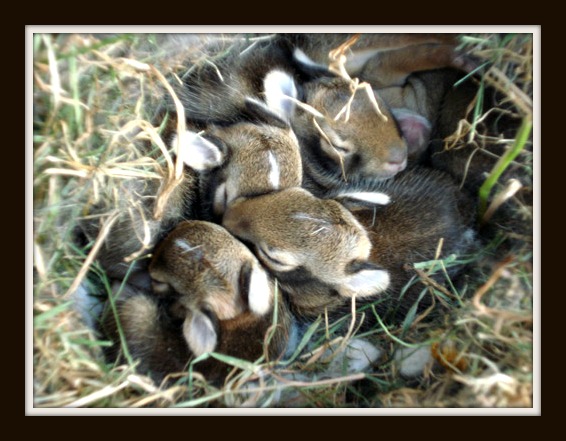 It depends on such factors:
It depends on such factors:
- Physical condition;
- Feeding;
- Genetic predisposition.
Rabbit breeders have such a rule - do not leave more cubs under the mother than she has teats. In this case, all the kids will have food. That is why they are trying to make sure that several females give birth at the same time in the rabbitry - so that there is something to do with the "extra" babies.
Baby rabbits, born naked and blind, are covered with hair and become sighted by the 12th day of life. Only after that they try to gradually get out of the nest box. By three weeks, they begin to try "adult" food. But the female can feed them for up to three months. In the wild, after 35-40 days, a rabbit has new offspring (the number of births is up to 11 per year) and still the firstborn, no, no, and dive to the mother. With the cellular content of young eared rodents, it is customary to remove them from the mother's nest at the age of one and a half months.
How much milk a cow gives per day
What causes a rabbit to get sick while feeding baby rabbits
A rabbit gets sick
During the feeding period, the female may categorically refuse to approach the babies. By her behavior, you can immediately determine what is wrong with her health. Most often, this behavior is caused by developing mastitis, an inflammatory process in the mammary glands. Causes due to which this disease develops:
- Underexpressed milk. There is more of it than the rabbits can eat;
- Infection in the female rabbit or parasitic disease;
- Unhygienic condition in-cage;
- Animal hypothermia or stress.
With mastitis, the mammary gland becomes hard. At the time of feeding, pain appears. If not treated, purulent processes may begin.
You can try to defeat the disease in its initial stage. Just need a gland massage. The best "masseurs" are the cubs themselves. To do this, the female must be laid down and held firmly.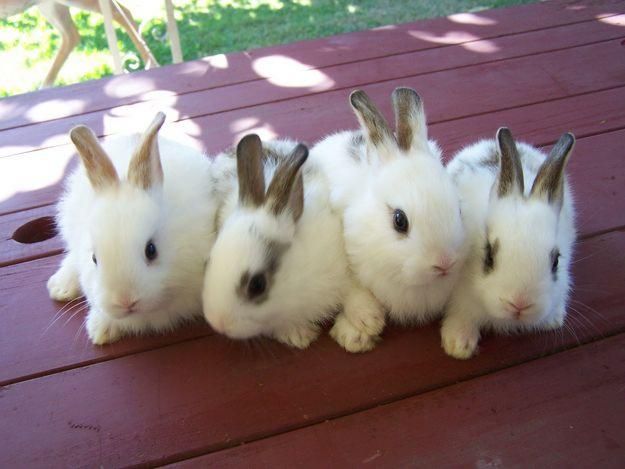 Rabbits, sucking milk, massage the gland. With a certain degree of luck, such therapy can help.
Rabbits, sucking milk, massage the gland. With a certain degree of luck, such therapy can help.
But, unfortunately, in most cases, especially when precious time is lost, it is impossible to do without the intervention of a veterinarian. Often, offspring from a sick rabbit have to be removed and either placed in other nests or fed artificially. In breeding, as a rule, such rabbits do not take further part.
Veterinary Interventions
On a commercial scale, sick or mastitis-prone females are removed from the herd without lengthy and costly treatment. An amateur rabbit breeder who does not want to lose a breeder is advised to regularly check the mammary glands of rabbits.
But not only mastitis can disturb a nursing mother. There are also diseases of the nipples. Hardening can occur from the premature appearance of milk in the glands. Injuries appear from the bites of babies. Such ailments are treated by lubricating the nipples with any vegetable oil (preferably olive oil) and gentle massage.